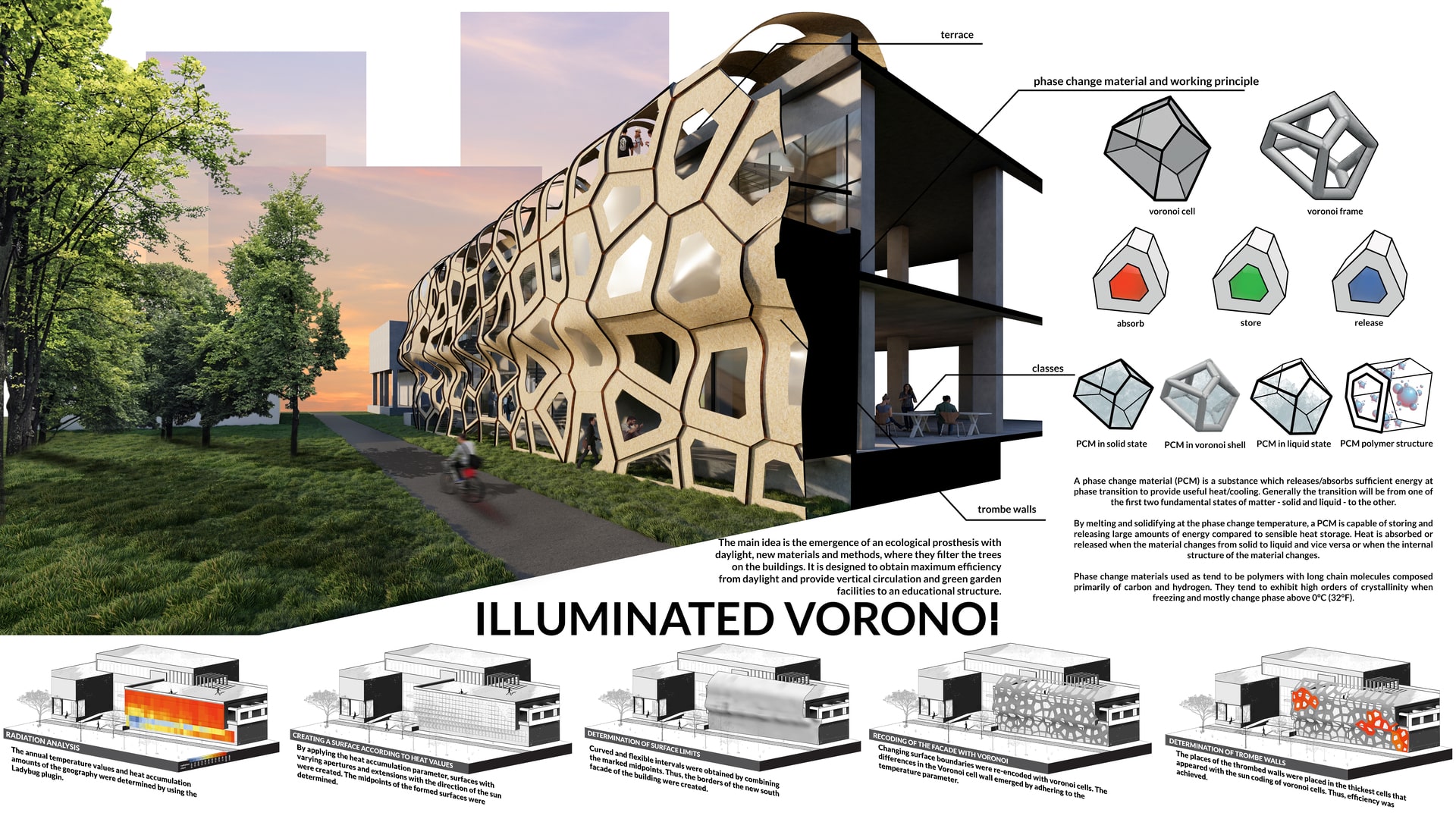Project Description
ILLUMINATED VORONOI The earth rotates on an oblique axis according to its plane, and as a result of this movement, seasonal and hourly changes occur in the amount of solar radiation coming from the sun to the earth's surface. The effects and changes of this energy coming from the sun in the buildings form the backbone of our project approach. The southern facade of the GTU Faculty of Architecture, selected as a project, is a two-storey facade 30m wide and 10m high, serving workshops and classrooms. Considering the location of the trees around the amount of solar radiation emitted by the sun throughout the year, the annual values have been reached with the "Radiation Analysis" from the Grasshopper / Ladybug plugin in kWh / m². A new code has been written to determine the center points of the unit grids reached and to create a facade design that changes according to the amount of heat accumulation mentioned. As a result of the coding, the points with low heat value on the facade formed protrusions. By combining the central points with changing positions on the facade, a new surface has been obtained and new borders of the south facade of the Faculty of Architecture have emerged. Voronoi cells were created by defining point clouds to the new border and search were made to use them as both structure and sunscreen. It was decided that there would be functioning mechanisms as a wall of heat thrombi, which is thought to be stored in Voronoi cells. This mechanism is absorbed by cells in parts with high radiation intensity and stored in these cells. The air between the cell and the building is heated and transmitted through the convection pathway through the holes of the prosthesis to the interior. In this way, these cells aim to investigate and optimize thermal energy performance, allowing heat to build up within it. Simulation model has been tried for energy performance calculations with phase change material (PCM), which is considered to be used in cells, this model is developed according to the parameters defined for optimization. Phase change material (PCM) undergoes state changes according to the temperature differences in the voronoi cell where it is located. The solid phase change material inside the voronoi cell, which is heated by the heat of the sun during the day, turns into a liquid and stores energy throughout the day. In the later hours of the day, with the cooling air, the phase change material turns solid and transfers its energy to the internal ambiance. A prosthetic approach was adopted at the front with this study we created to improve the ecological performance of the building. The movement of the body in the prosthesis and the air flow in the prosthesis are also evaluated, and a prosthesis approach in which solar energy is actively considered is supported. While this prosthesis supports biodiversity, it creates life intervals with the building, complementing the green with the nature and supplying energy to the building passively.
